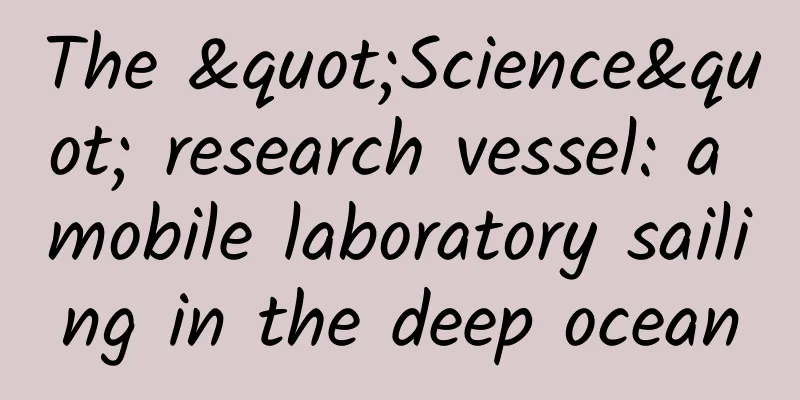This tumor is not easy to detect but is very dangerous! Screening is recommended for these people!

|
When it comes to aortic aneurysm, many people will ask if it is a tumor growing on the blood vessel. In fact, aortic aneurysm and tumor are two completely different concepts. Copyright images in the gallery. Reprinting and using them may lead to copyright disputes. A tumor is a solid tumor, and an aortic aneurysm is a large blood bag filled with blood. 01 What is an aortic aneurysm? Before understanding aortic aneurysm, let’s first understand what the aorta is. The aorta is the largest artery in the human body. It originates from the left ventricle of the heart. The first section that runs toward the head is called the ascending aorta; the section that continues upward, horizontally, to the left and back, and downward is slightly arched and is called the aortic arch; the section that then runs downward along the spine is called the descending aorta; the section that passes below the diaphragm and above the pelvic cavity is called the abdominal aorta. Image source: Author Aortic aneurysm is caused by local structural defects in the aortic blood vessel wall, which leads to blood vessel dilation and eventually becomes larger and larger, forming a "big blood bag" that is much thicker than a normal blood vessel wall, but is still part of the blood vessel wall. This "big blood bag" is filled with arterial blood (not a substantial tumor), forming a tumor-like expansion, so it is called an aortic aneurysm. Aortic aneurysms can occur at any location in the aorta. For example, if they grow on the abdominal aorta, it is an abdominal aortic aneurysm, and if they grow on the thoracic aorta, it is a thoracic aortic aneurysm. Abdominal aortic aneurysms account for 90% of all aortic aneurysms, that is, the vast majority of aortic aneurysms are abdominal aortic aneurysms, and thoracic aortic aneurysms only account for a relatively small part. Image source: Author Of course, more professionally, aortic aneurysm can be further divided into true aortic aneurysm, false aortic aneurysm, dissecting aortic aneurysm , etc. True aortic aneurysm is caused by the weakening of the blood vessel wall, which is expanded to form a bulge, but the blood vessel wall is very intact. This is called true aortic aneurysm. True aortic aneurysm accounts for the vast majority of aortic aneurysms. Pseudoaortic aneurysm is when the blood vessel wall is incomplete and damaged, such as due to a knife wound or gunshot wound, or a transmural ulcer that causes the blood vessel wall to be damaged and break out of the blood vessel, forming a large bulge. The bulge does not expand further for the time being, and the bulge still contains arterial blood or thrombus, but the outer wall is no longer a complete blood vessel wall. This is called a pseudoaortic aneurysm. Dissecting aortic aneurysm. The normal aorta has three layers: the outer membrane, the inner membrane, and the elastic fiber layer in the middle, also called the muscular layer. If there is damage between the inner membrane and the elastic fiber layer, the blood vessel wall that was originally tightly bound together will be forcibly stretched to form a dissection (channel) and the resulting tumor-like expansion is called a dissecting aortic aneurysm. 02 Are there any symptoms for aortic aneurysm? Who should be screened? Most true aortic aneurysms do not have any symptoms in the early, middle, or even late stages. For example, thoracic aortic aneurysm is located in the chest cavity and is protected by the ribs, sternum, and spine. It cannot be felt, and one cannot feel it unless it is critically ruptured or the dissection is torn, which will cause chest and back pain, or chest pain, or back pain. Only then can an aortic aneurysm be discovered through a check-up; otherwise it cannot be discovered. Copyright images in the gallery. Reprinting and using them may lead to copyright disputes. For abdominal aortic aneurysm, thin people may see a beating mass when lying down, or feel a mass beating with the heartbeat. Apart from this, few people have subjective symptoms, unless the abdominal aortic aneurysm is particularly large and compresses the intestines or other internal organs, resulting in some corresponding clinical symptoms, but they are often atypical and non-specific. When an aortic aneurysm is on the verge of rupture, pain will occur in the later stages. It is a dull pain at first, and then it becomes severe pain, a tearing pain, at the moment of critical rupture. It is often too late to treat it at this time, because a large amount of blood will be lost at the moment of rupture, and death usually occurs due to rapid blood loss. Because of this, aortic aneurysm is often referred to as a time bomb in the body that can explode at any time and is often difficult to detect before it explodes. Since the vast majority of aneurysms are related to atherosclerosis, older people with a history of atherosclerosis and a family history of aneurysms, especially those with some chronic diseases such as refractory hypertension, long-term persistent asthma, chronic cough, habitual constipation in the elderly, etc., are high-risk factors for aortic aneurysms. Such people should undergo regular physical examinations or targeted examinations, such as aortic ultrasound or CT scans, which can easily detect whether they have an aortic aneurysm. Author: Chen Zhong, Chief Physician, Beijing Anzhen Hospital, Capital Medical University, President of the Vascular Surgery Branch of the Chinese Medical Doctor Association Review|Liu Changwei, Chief Physician, Professor and Doctoral Supervisor, Peking Union Medical College Hospital Submitted by: Chinese Medical Association The cover image and the images in this article are from the copyright library Reprinting may lead to copyright disputes |
<<: After sitting on a plane for several hours, I stood up and suddenly died! What happened?
>>: Did you know? A healthy gut means long-term health!
Recommend
Finally figured it out! What should operations and products do in the early stages of a project?
Let’s take a look at the following picture We nee...
How much does it cost to develop the Baishan Hotel mini program? How much is the price for developing Baishan Hotel Mini Program?
WeChat Mini Program is an application that users ...
After several offline sharing sessions, this is the methodology I summarized about corporate communities.
One of them recently traveled to several province...
Kuaishou Information Stream Ads oCPC Smart Delivery Guide
During the process of running Kuaishou informatio...
The rise of music short videos, will the next Kuaishou be born?
As early as 2014, an app called musical.ly was la...
The operating secrets of Tik Tok, the international version of Douyin: Let users operate themselves!
Tik Tok, the international version of Douyin , ha...
Pain level 10! Have you heard of "snake around the waist"?
Let me ask you a question first. Have you ever he...
A Beginner's Guide to Brand Building
Brand building is a very difficult, lengthy and a...
Neither a handheld nor a home console? The truth about Nintendo NX from clues
In the next-generation war, although Nintendo sti...
Unfettered space exploration may be threatening the future of “space security”
【Mobile software: Bo Ke Yuan】As countries and pri...
Yang Guozheng's Eye Method + Sanyuan Naqi (3 sets 5.07G)
Yang Guozheng's Shape Parent Eye Method + San...
Android-6 steps to teach you how to customize View
If you plan to completely customize a View, you n...
Volkswagen closes German factory, Blume is willing to "get a speeding ticket" to enter the Chinese time
"The situation is very serious." This i...
91 Ten Articles - New Energy Vehicle Industry Briefing: 1,000 km range will be a reality by the end of next year
1. Fuyao Glass's annual report shows that the...
"Big-eyed cute boy" ghost octopus: Who said I'm a "vampire"...
Don't be fooled by the scary name "vampi...









